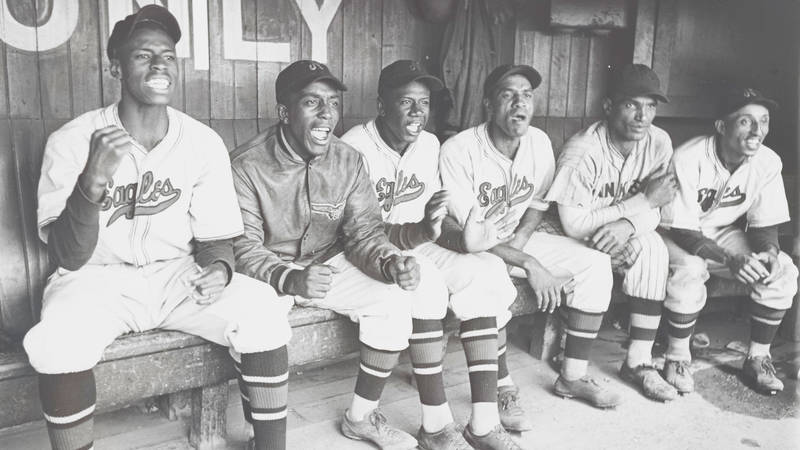She forever changed the course of the civil rights movement in the United States. Here's what you should know about her legacy.
In the summer of 1955, 14-year-old Emmett Till was tortured and lynched by a mob of white men while visiting relatives in Money, Mississippi. The reaction of his mother, Mamie Till-Mobley, to his violent murder galvanized the nation and forever changed the course of the civil rights movement in the United States. NPCA supports creating an Emmett Till and Mamie Till-Mobley National Historical Park to honor and preserve Emmett and Mamie’s legacy, sharing the story that reopened the nation’s eyes to the brutal realities of racism in the South.
In recognition of what would have been Mamie Till-Mobley’s 100th birthday, here are 12 things you might not know about this matriarch of the civil rights movement, as shared in her autobiography, “Death of Innocence: The Story of the Hate Crime That Changed America.”
1. One of Mamie’s first lessons in racial injustice was over a roll of toilet paper.

Mississippi Reckoning
Emmett Till was murdered 64 years ago. Is it time for a national park that recognizes him and tells the story of the civil rights struggle in Mississippi?
See more ›On a family trip from Chicago to Mississippi when she was 12, Mamie noticed that her grandparents used the Sears, Roebuck, & Co. catalog as toilet paper. She went to the local white-owned drugstore to buy them some real toilet paper, but the owner refused to sell her any, suggesting they use corncobs like everyone else.
Mamie was preparing to say something when her grandfather walked in and escorted her out. According to her autobiography, “he pounded the fear of every black person in the state of Mississippi into [her].” For the first time, she appreciated the liberty she enjoyed back in Chicago. She wrote, “In Mississippi, there were certain things that black people were denied by white people. The freedom of movement. The luxury of choice. And a roll of toilet paper.”
2. Her mother’s house was a gathering place for Black people who left the South in search of a new life.
Mamie’s family called their Chicago suburb “Little Mississippi” and thought of her mother Alma Carthan’s house as the Ellis Island of Chicago. Carthan helped folks adjust and find jobs and “gave them every reason to look forward, never back.” Between 1915 and 1940, half a million Black Americans moved to Chicago, more than doubling the city’s Black population, and Mamie’s town was a tiny microcosm of that change.
Carthan’s house was a center of the community, part social center, part meetinghouse, part job fair and part church. She was one of the few people in the neighborhood with a telephone, and she shared it with everyone ― even leaving a key under the mat and a container for folks to leave nickels if they stopped by to use the phone.
3. Mamie was the first Black student to make the honor roll at her high school.
Mamie was only the fourth Black student to graduate from her high school. She loved school, particularly poetry, and worked hard to maintain her status as an A student. Most of the girls in her class dropped out to get married by the time they were 16. Mamie was practically considered an old maid for waiting until she was nearly 19 to marry Louis Till.
4. On her first date with Louis Till, they integrated their local drugstore.
It was Mamie’s first-ever date and first-ever banana split, and she was shocked at her future husband’s insistence that they eat their ice cream at a booth inside the drug store, rather than taking it outside. Black folks passing by saw them through the window and flocked inside, making themselves at home in the other booths. Word spread all over town, and Mamie was terrified her mother would find out, but she admired Louis for opening a door for everyone in the neighborhood.
5. Mamie used one of Louis’ belongings to identify Emmett’s body years later.

Lands of Protest
A visual history of racial justice demonstrations in America’s national parks.
See more ›Mamie’s relationship with Louis was troubled and became abusive within a year of their wedding, and he was soon deployed overseas to serve in World War II. He had served about two years when Mamie received a telegram vaguely explaining his death. The military returned only a few of his belongings — including a silver ring he’d purchased in Casablanca and had had engraved with his initials. Mamie gave it to Emmett, and it became a prized possession.
Emmett was wearing the ring when a group of white men later kidnapped and murdered him, and it served as a crucial way for the family to positively identify him.
6. Mamie did not want Emmett to go to Mississippi.
Emmett had just turned 14 when he was invited to spend a week with his cousins in Money, Mississippi. Mamie and her mother were extremely reluctant to let him go, knowing that growing up in Chicago had largely shielded him from the harsh realities of racism. Emmett didn’t see a difference between himself and his white classmates or the white adults he regularly interacted with. Emmett was excited to go, however, and Mamie knew she’d have to prepare him to understand the everyday realities for Black people in the South.
7. Mamie gave Emmett a “crash course in hatred.”
Before his trip, Mamie sat Emmett down and told him how to behave in front of white people. It was the first time she recalled talking to her son explicitly about race, and she could tell he wasn’t entirely sold. In her autobiography, she reflected, “How do you give a crash course in hatred to a boy who has only ever known love?”
Mamie instructed Emmett to always say “yes, ma’am” and “no, sir” when talking to white people, and to step off the sidewalk if a white woman was walking toward him, making sure to lower his head until she passed. She told him to get on his knees in deference if he had to.
8. Mamie and her family created a press storm as soon as they found out Emmett was missing.
The day after a white woman claimed Emmett had whistled at her — but Emmett’s cousins say he was simply whistling while she was nearby — Mamie’s cousin called to tell her that Emmett had been kidnapped by white men in the middle of the night. Mamie and her family members gathered at her mother’s house, calling up newspapers the same day. Reporters interviewed Mamie about her son’s disappearance, and by the next morning, a cadre of Chicago power players were involved, including the NAACP, the mayor, an Illinois congressman and the governor. Although the family did not yet know that Emmett had been murdered, Mamie’s early actions would lead to throngs of reporters and spectators waiting for Emmett’s body at the train station when it arrived in Chicago a few days later.
9. Mamie paid nearly a year’s salary to transport Emmett’s body back to Chicago.
Officials in Mississippi were determined to bury Emmett locally to cover up the brutality of the crime and quickly had a grave dug with his name on it. Mamie raced against the clock to persuade officials to return her son to Chicago. It would cost $3,300 — about $34,000 in today’s dollars — and she was making less than $4,000 a year at the time, but in her grief, she told the funeral director in Chicago that if she lived, she’d pay him, and if she’d didn’t, someone else would.
10. Mamie fought hard to see Emmett’s body — and let others see him.

Learn About Black History in 11 Unexpected Places
These fascinating sites share important and often overlooked stories about people who shaped U.S. history and culture.
See more ›When Emmett’s body arrived in Chicago, the box was locked with the seal of the state of Mississippi. Mamie learned that undertakers on both ends, and her own relatives, had signed papers agreeing to keep the box sealed, which would have covered up the extreme violence of the crime. Mamie fought tooth and nail for the Chicago undertaker to open the box, and when she finally saw her son, she knew immediately they had to have an open casket funeral.
Emmett was maimed nearly beyond recognition — his killers had continued to assault him long after his death. Mamie famously insisted, “Let the world see what I’ve seen.”
The response was immediate. The family postponed Emmett’s burial by four days while tens of thousands of people filed past his open casket. Nurses were on hand to help the many who fainted — according to Mamie, one in five mourners needed physical assistance. Jet magazine published photos of Emmett’s body, forcing Americans around the country to reckon with the violent realities of racism.
11. Defense attorneys accused Mamie of faking her son’s death.
At every turn, the defense attorneys in Emmett’s murder trial worked to play up the doubts and suspicions of the all-white, all-male jury. While Mamie was on the witness stand, one of Roy Bryant and J.W. Milam’s attorneys asked whether she had an insurance policy for Emmett in case of his accidental death or murder. When she answered that she did, he accused her of working with the NAACP to dig up a body from a cemetery, plant Louis’s ring on the corpse and throw it in the Tallahatchie River where Emmett’s body was found. The defense claimed that Emmett was alive and well in Detroit with Mamie’s father — though her father was actually in the courtroom at the time.
Mamie kept her composure but felt her testimony hadn’t mattered at all. The jury acquitted Emmett’s murderers.
12. Mamie served as a powerful speaker and teacher for the rest of her life.
After the trial, demonstrations broke out across the country and around the world. Mamie was flooded with speaking requests, and after each one, the NAACP experienced a huge influx of donations and new memberships. The month after the trial, Mamie was sometimes making two or three speeches a day, and though she was still struggling with her own grief, she felt a strong sense of importance around sharing Emmett’s story.
Stay On Top of News
Our email newsletter shares the latest on parks.
Eighteen years after Emmett’s death, while serving as an elementary school teacher, Mamie founded the Emmett Till Players, a touring troupe of young students who delivered speeches about hope, unity and determination. Inspired in part by Martin Luther King Jr.’s speeches, Mamie saw how public speaking could teach students history, confidence and discipline. She wanted students to understand the immense sacrifices that others had made for the opportunities and freedom they had, so naturally, she named the program for Emmett.
Mamie continued speaking throughout the country until her death in 2003, connecting with mothers of other slain Black children and making sure no one ever forgot her son’s story.
She closes her autobiography by writing, “Although I have lived so much of my life without Emmett, I have lived my entire life because of him.”
About the author
-
 Vanessa Pius Former Senior Manager, Social Media and Engagement
Vanessa Pius Former Senior Manager, Social Media and EngagementAs Senior Manager, Social Media and Engagement, Vanessa advances NPCA’s mission through creative storytelling and engaging the organization’s online community.


